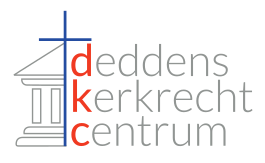Modern advancements in technology present opportunities for substantial savings while promoting greener practices. Investing in systems designed for reduced energy consumption not only delivers financial gains but also aligns with global trends towards sustainability. By considering various options available today, entities can enhance their financial standing while lowering their environmental footprint.
Energy savings play a critical role in the decision-making process. When organizations opt for systems that prioritize reduced energy usage, they create immediate and ongoing financial relief. This approach not only curbs utility expenses but also adds value to properties by showcasing a commitment to sustainable practices, which increasingly attracts conscientious consumers and investors.
Moreover, the shift towards sustainable systems establishes a foundation for future investments. By prioritizing longevity and energy efficiency, businesses can secure a healthier return on investment over time. Embracing innovative technologies is not simply a matter of preference but a strategic move that fosters resilience in a rapidly changing marketplace.
Calculating Total Ownership Expense for Energy-Saving Technologies
Assessing the total ownership expense of energy-conserving technologies involves a detailed examination of various cost components. It extends beyond initial investment to include operating, maintenance, and disposal expenses throughout the product’s life cycle. This holistic approach ensures accurate understanding of financial impacts associated with energy savings.
During this analysis, it’s crucial to factor in the anticipated energy savings achieved by utilizing advanced technologies, which often translate into significantly reduced utility bills over time. Incorporating data on efficiency ratings and performance metrics can yield a clear projection of long-term financial advantages, reinforcing the argument for adopting these solutions.
In addition, estimating costs related to sustainability initiatives, like rebates or tax incentives, can further enhance the appeal of these technologies. Engaging with credible sources such as https://avethvac.com/ for insights and tools can support this analysis, ensuring that all potential savings are comprehensively evaluated.
Long-Term Savings: Comparing Initial Investment and Operational Costs
Investing in sustainable technologies often involves a substantial initial outlay. However, analyzing the financial implications over time reveals that these upfront expenses can be offset by significant energy savings during operation. Understanding the balance between initial expenditures and ongoing costs is crucial for making informed choices that support environmental goals while also enhancing fiscal responsibility.
Operational expenses, which encompass maintenance and energy consumption, can vary greatly between traditional and advanced solutions. While conventional options may appear less costly at first glance, they often yield higher utility bills and increased maintenance needs. In contrast, modern, eco-friendly alternatives tend to have lower operational costs, resulting from reduced energy demands and improved reliability.
To comprehend the full picture, comprehensive cost analysis should incorporate projections of energy expenses over a defined period. This approach illuminates how investments in innovative technologies can lead not only to reductions in monthly bills but also to extended lifespan and lower repair costs, ultimately fostering a more sustainable future.
Long-lasting systems that minimize energy waste contribute to both environmental protection and financial health. By evaluating both the initial investment and the potential long-term operational savings, organizations can drive economic and ecological progress, ensuring that every dollar spent contributes to a greener tomorrow.
Assessing Environmental Impact and Its Financial Implications
Evaluating the ecological consequences of adopting advanced technologies extends beyond mere figures; it demands a holistic view of how these choices influence our surroundings and finances. The integration of sustainable solutions significantly contributes to both environmental health and economic prosperity.
Incorporating such technologies leads to substantial energy savings, resulting in lower operational costs for businesses. These fiscal advantages often correlate with reduced carbon footprints, aligning with global goals for environmental protection. Understanding this relationship is key for stakeholders aiming to enhance sustainability through informed investment returns.
- Reduced emissions contribute to healthier ecosystems.
- Long-term financial gains stem from decreased energy expenditures.
- The lifecycle cost of sustainable technologies showcases their economic viability.
Innovation in energy conservation is not merely a trend; it’s a strategic investment towards a sustainable future. Entities adopting these measures often experience increased market competitiveness and brand loyalty, as consumers increasingly prioritize environmental responsibility.
- Conducting environmental impact assessments can pinpoint areas for improvement.
- Analyzing the financial outcomes of sustainable practices provides a clearer picture of investment returns.
Ultimately, the focus on reducing environmental damage is intertwined with financial strategy, making it a priority for organizations committed to sustainability and responsible resource management. Challenges may arise, yet the collaborative effort towards greener practices paves the way for enduring advantages in both ecology and economy.
Incentives and Rebates: Maximizing Financial Benefits in Upfront Costs
Investing in modern technologies often requires a significant upfront expenditure. However, various rebates and incentives can substantially enhance your financial return by reducing this initial outlay. Governments and utility companies frequently offer programs designed to encourage the adoption of more sustainable options, leading to considerable energy savings over time.
These financial aids can take various forms, including tax credits, grants, and reduced rates on energy-efficient products. By taking advantage of such programs, consumers can greatly minimize their initial investment while also positioning themselves for long-lasting savings. This strategy not only facilitates a more accessible entry into sustainable practices but also accelerates the realization of overall savings.
Understanding the eligibility requirements for these incentives is crucial. Staying informed about changes in policies and available programs can equip individuals and businesses to make the most of their investments. Evaluating local and state offerings enhances the chances of maximizing savings right from the start.
Ultimately, the combination of reduced upfront costs through financial support and ongoing savings from efficient technologies leads to a compelling reason to participate in these initiatives. Realizing the potential for sustainability benefits, alongside the financial return on investment, makes this approach a win-win for both consumers and the environment.
